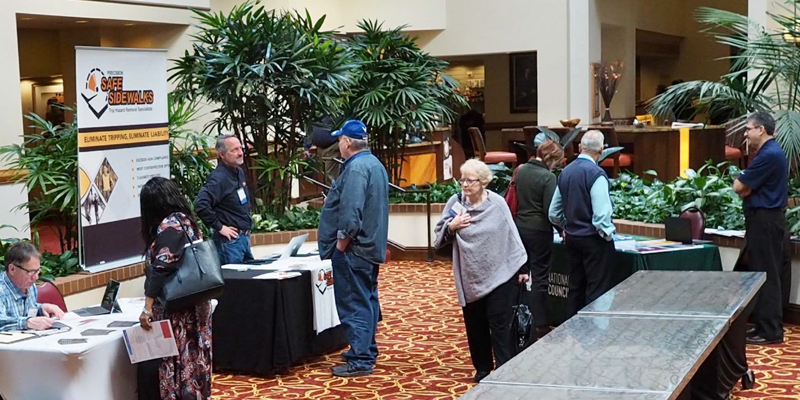- ADA Coordinators: Intro to the Codes — Certified ADA Coordinators in the ACTCP program must be conversant in the design principles used by architects, contractors and facilities in order to support full architectural inclusion for employees and customers. But understanding the Federal laws for design under the 2010 ADA Standards for Accessible Design is only half the equation. Most states also reference the accessibility provisions of the International Building Code (IBC). The IBC provisions have been extensively coordinated with the 2010 ADA and the Fair Housing Act Guidelines (FHAG). Having an overall understanding of the IBC results in improved accessibility. Incorporating accessibility in the planning, design and construction phases, ADA Coordinators play an important role in limiting the need for later expensive and time-consuming retrofits as part of Title I accommodations or preventing unnecessary litigation. This discussion covers how and when the building codes are enforced, and a general overview of the requirements in the codes and accessibility technical standard ICC A117.1, Accessible and Usable Buildings and Facilities. Speakers: Kimberly Paarlberg and Jay Woodward.
- Healthcare Facilities — Accessible and/or Assisted Options in Design — The designs for hospital, nursing homes and assisted living facilities are changing dramatically. Hospitals are moving to single rooms and offering special facilities for bariatric patients or others that may need a different approach for access. Many ‘hospital’ activities are moving to outpatient procedures or even out of the hospitals entirely and into ambulatory care facilities. Nursing homes and assisted living are changing to private rooms or suites to provide a more home like environment. The International Code Council (ICC) is working with the American Hospital Association to revise and improve provisions in the codes for these types of facilities. This discussion addresses the Codes accessibility requirements including hospital and nursing home patient/resident rooms; provisions for bathrooms; kitchen areas in the ‘house’ concept for nursing homes and physical/occupational therapy areas. Studies for assisted toileting in nursing homes/hospitals patients are also explored. Speaker: Kimberly Paarlberg.
- Updates to the Accessibility Standard: 2017 ICC A117 — The building codes reference the ICC A117.1 for technical requirements for how to make building and site elements accessible. The 2017 edition of the ICC A117.1 has dramatic and sweeping changes for clear floor spaces, turning spaces and accessible route requirements. These provisions exceed the requirements in the 2010 Standards for Accessible Design. The increases to these building blocks is in response to technical data regarding the space needed by persons using scooters and some types of motorized wheelchairs. This presentation provides technical details of these significant variations, and the research that supports these changes. The ICC A117.1 has also been updated to coordinate with the Public Rights of Way Guidelines, including exterior routes, curb cuts, blended transitions, and parking requirement. Additionally, technical information was also developed for items not previously addressed, including electric car charging stations; accessible windows; accessible routes through parking lots; sign language interpreter’s stations; enhanced acoustics for classrooms; charging stations for electric wheelchairs and scooters; and gaming machines and tables. To fully understand the effects of these changes, we recommend also attending the ‘Impact of the 2017 A117.1 on Business’ session 7H. Speakers: Gene Boecker and Kimberly Paarlberg.
- Accessible Exterior Routes and Surfaces — This advanced session offers the unique opportunity to learn from both the US Access Board and the International Code Council experts teaching together, as they focus on scoping and design details of exterior routes and surfaces. This course reviews the differences between sidewalks in the public right-of-way, accessible routes, shared use paths, and pedestrian trails. Additionally, the latest information on accessible surfaces is presented and discussed. By participating in this program attendees will have a clear understanding of the important differences, overlapping provisions and vocabularies of one of the most important fundamentals of accessible design. Speakers: Bill Botten and Jay Woodward.
- Impact of the 2017 Edition of the ACC A117.1 on Business — The 2017 edition of the ICC A117.1 has dramatic and sweeping changes for clear floor spaces, turning spaces and accessible route requirements. These will exceed the requirements 2010 Standards for Accessible Design. The new provisions will have a domino effect on other design basics such as, bathrooms, kitchens, corridors, retail/assembly spaces, and subsequent costs of construction. The increases to these building blocks is in response to technical data regarding the space needed by persons using scooters and some types of motorized wheelchairs. For an overview all the revisions and the supporting documentation, the session 5H) Updates to the ICC Accessibility Standards: 2017 Edition of the ICC AII7 is a critical precursor to attend. Speakers: Gene Boecker and Kimberly Paarlberg.
- Classroom Acoustics: New Design for Students with Hearing Impairments — Research shows that good classroom acoustics are essential to support language acquisition and learning for all children, particularly younger children. For children who have hearing loss and those who use cochlear implants there is no substitute for a good acoustic environment. Assistive technologies typically only amplify the teacher and do not amplify discussions among children or between the teacher and an individual child. Children with disabilities not related to hearing, such as autism and learning disabilities or recent traumatic experiences may be adversely affected by high ambient noise levels. Students that use a different language at home will also be able to listen more closely to fully understand the teacher and benefit from conversation among peers. Teachers report that a good acoustic environment actually assists in controlling the classroom, reducing the need to raise their voices, and promotes more civil behavior among students. Thus, good acoustic and low background noise in a classroom benefits everyone! The 2017 ICC A117.1 has added technical criteria for enhanced classroom acoustics. The requirements set specific criteria for maximum classroom size considered, maximum reverberation time and background noise in classrooms. This presentation provides a general overview of where this is applicable and what are considerations and options for compliance. Speaker: Kimberly Paarlberg.
|

